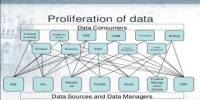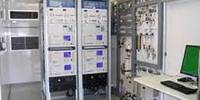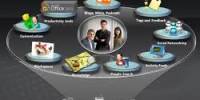Introduction:
Gates was born in Seattle, Washington, to William H. Gates, Sr. and Mary Maxwell Gates, of English, German, and Scotch-Irish descent. His family was upper middle class; his father was a prominent lawyer, his mother served on the board of directors for First Interstate BancSystem and the United Way, and her father, J. W. Maxwell, was a national bank president. Gates has one elder sister, Kristi (Kristianne), and one younger sister, Libby. He was the fourth of his name in his family, but was known as William Gates III or “Trey” because his father had dropped his own “III” suffix. Early on in his life, Gates’ parents had a law career in mind for him.
At 13 he enrolled in the Lakeside School, an exclusive preparatory school.When he was in the eighth grade, the Mothers Club at the school used proceeds from Lakeside School’s rummage sale to buy an ASR-33 teletype terminal and a block of computer time on a General Electric (GE) computer for the school’s students.Gates took an interest in programming the GE system in BASIC and was excused from math classes to pursue his interest. He wrote his first computer program on this machine: an implementation of tic-tac-toe that allowed users to play games against the computer. Gates was fascinated by the machine and how it would always execute software code perfectly. When he reflected back on that moment, he commented on it and said, “There was just something neat about the machine.” After the Mothers Club donation was exhausted, he and other students sought time on systems including DEC PDP minicomputers. One of these systems was a PDP-10 belonging to Computer Center Corporation (CCC), which banned four Lakeside students—Gates, Paul Allen, Ric Weiland, and Kent Evans—for the summer after it caught them exploiting bugs in the operating system to obtain free computer time.
At the end of the ban, the four students offered to find bugs in CCC’s software in exchange for computer time. Rather than use the system via teletype, Gates went to CCC’s offices and studied source code for various programs that ran on the system, including programs in FORTRAN, LISP, and machine language. The arrangement with CCC continued until 1970, when the company went out of business. The following year, Information Sciences, Inc. hired the four Lakeside students to write a payroll program in COBOL, providing them computer time and royalties. After his administrators became aware of his programming abilities, Gates wrote the school’s computer program to schedule students in classes. He modified the code so that he was placed in classes with mostly female students. He later stated that “it was hard to tear myself away from a machine at which I could so unambiguously demonstrate success.” At age 17, Gates formed a venture with Allen, called Traf-O-Data, to make traffic counters based on the Intel 8008 processor. In early 1973, Bill Gates served as a congressional page in the U.S. House of Representatives.

Bill Gates’ mugshot from a traffic violation in 1977
Gates graduated from Lakeside School in 1973. He scored 1590 out of 1600 on the SAT and enrolled at Harvard College in the autumn of 1973. While at Harvard, he met Steve Ballmer, who later succeeded Gates as CEO of Microsoft, and computer scientist Christos Papadimitriou, with whom he wrote a paper about pancake sorting.He did not have a definite study plan while a student at Harvardand spent a lot of time using the school’s computers. He remained in contact with Paul Allen, joining him at Honeywell during the summer of 1974. The following year saw the release of the MITS Altair 8800 based on the Intel 8080 CPU, and Gates and Allen saw this as the opportunity to start their own computer software company. He had talked this decision over with his parents, who were supportive of him after seeing how much Gates wanted to start a company.
CAREER
Gates’s early experiences with computers included debugging (or eliminating errors from) programs for the Computer Center Corporation’s PDP-10, helping computerize electric power grids for the Bonneville Power Administration, and—while still in high school—founding with high school friend, Paul Allen, a firm named Traf-O-Data. Their small company earned them $20,000 in fees for analyzing local traffic patterns.
While working with the Computer Center’s PDP-10, Gates was responsible for what was probably the first computer virus, which is a program that copies itself into other programs and ruins data. Discovering that the machine was hooked up to a national network of computers called Cybernet, Gates invaded the network and installed a program on the main computer that sent itself to the rest of the network’s computers: Cybernet crashed. When Gates was found out, he was severely reprimanded, causing him to stay away from computers for his entire junior year at Lakeside.
In January of 1975 Allen showed Gates a cover story in the magazine Popular Mechanics about a $350 million microcomputer, the Altair, made by a firm Called MITS in New Mexico. When he saw the story, Gates knew he wanted to be in the forefront of computer software design. “What first got me so interested in software development, and eventually led to the founding of Microsoft, was the excitement I felt as a teenager when I realized that computers gave me feedback and information like a puzzle to be studied and solved,” said Bill Gates (http://www.microsoft.com).
Gates and Allen first wrote a BASIC interpreter for the Altair computer. BASIC being a simple, interactive computer language designed in the 1960s and “interpreter” program that executes a source program by reading it one line at a time and performing operations immediately.
When Gates dropped out of Harvard in 1975, he ended his academic life and began his career in earnest as a software designer and entrepreneur. At this time, he and Allen became cofounders of Microsoft. They wrote programs for the early Apple and Commodore machines and expanded BASIC to run on microcomputers other than the Altair.
Gates’s big opportunity arrived in 1980 when IBM approached him to help with their personal computer project, code named Project Chess. Gates created the Microsoft Disk Operating System, or MS-DOS, and its related applications can run on almost any IBM compatible PC. By the early 1990s, Microsoft had sold more than 100 million copies of MS-DOS, making the operating system the all-time leader in software sales.
Gates’s other interests encompass medicine and the arts. In 1989 he started a company called Corbis. Corbis owns the rights to 800,000 digitized images. The images are licensed by newspapers and magazines and published by them either in print or electronic form. Another interest of his is biotechnology, because of the breakthroughs that have occurred using this technology. He believes that with the Internet, researchers will be able to communicate faster with each other, thus leading to more cures. Finding the best way to treat or prevent illness is important to Gates. He donated $1.5 million in 1998 to the International Aids Vaccine Scientific Blueprint project in the hope of developing a vaccine for Aids.
By the end of 1998, Gates was worth around $39 billion, making him the wealthiest self-made man in the entire world. In 1997, Microsoft recorded a net income of $3.4 billion. This made up 41 percent of the profits of the 10 largest publicly traded software companies. This period saw the roll out of Windows 95 and 98, major updates of the world’s preeminent computer operating system, Windows. In the first three days of its release, Windows 98 sold more than 500,000 copies, matching the sales of Windows 95 in its debut.
Gates’s competitive drive and fierce desire to win have made him a powerful force in business, but have also consumed much of his personal life. In the six years between 1978 and 1984 he took a total of only two weeks vacation.
PRESENT CONDITION
CONLUSION
William Henry “Bill” Gates III (born October 28, 1955) is an American business magnate, philanthropist, and chairman of Microsoft, the software company he founded with Paul Allen. He is consistently ranked among the world’s wealthiest people[and was the wealthiest overall from 1995 to 2009, excluding 2008, when he was ranked third. During his career at Microsoft, Gates held the positions of CEO and chief software architect, and remains the largest individual shareholder with more than 8 percent of the common stock. He has also authored or co-authored several books.
Gates is one of the best-known entrepreneurs of the personal computer revolution. Although he is admired by many, a number of industry insiders criticize his business tactics, which they consider anti-competitive, an opinion which has in some cases been upheld by the courts (see Criticism of Microsoft). In the later stages of his career, Gates has pursued a number of philanthropic endeavors, donating large amounts of money to various charitable organizations and scientific research programs through the Bill & Melinda Gates Foundation, established in 2000.
Bill Gates stepped down as chief executive officer of Microsoft in January 2000. He remained as chairman and created the position of chief software architect. In June 2006, Gates announced that he would be transitioning from full-time work at Microsoft to part-time work and full-time work at the Bill & Melinda Gates Foundation. He gradually transferred his duties to Ray Ozzie, chief software architect and Craig Mundie, chief research and strategy officer. Gates’ last full-time day at Microsoft was June 27, 2008. He remains at Microsoft as non-executive chairman.
















